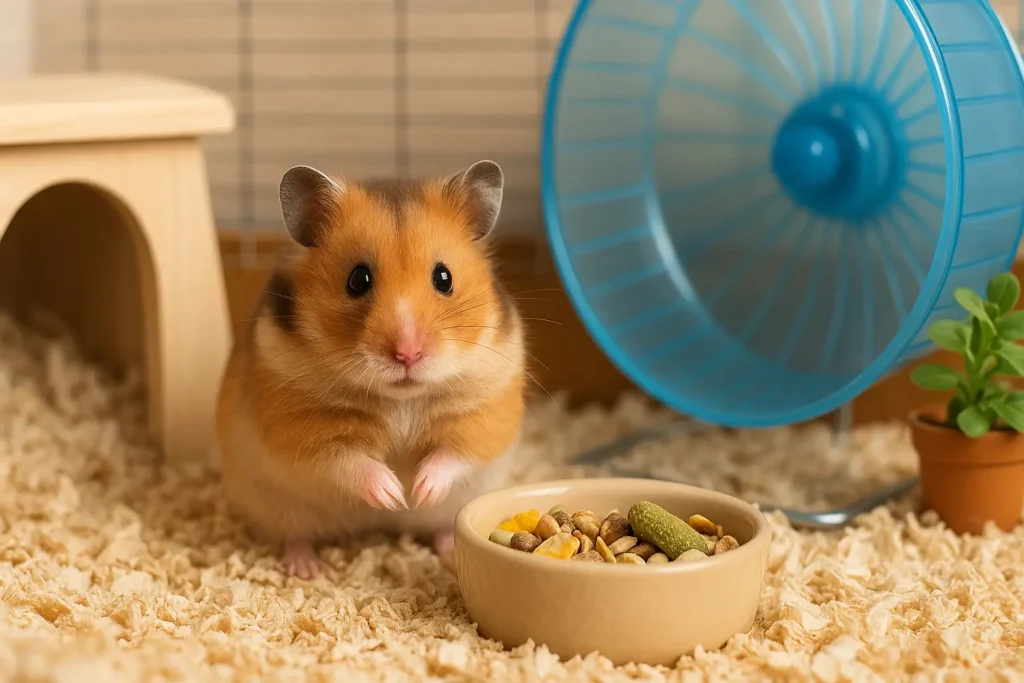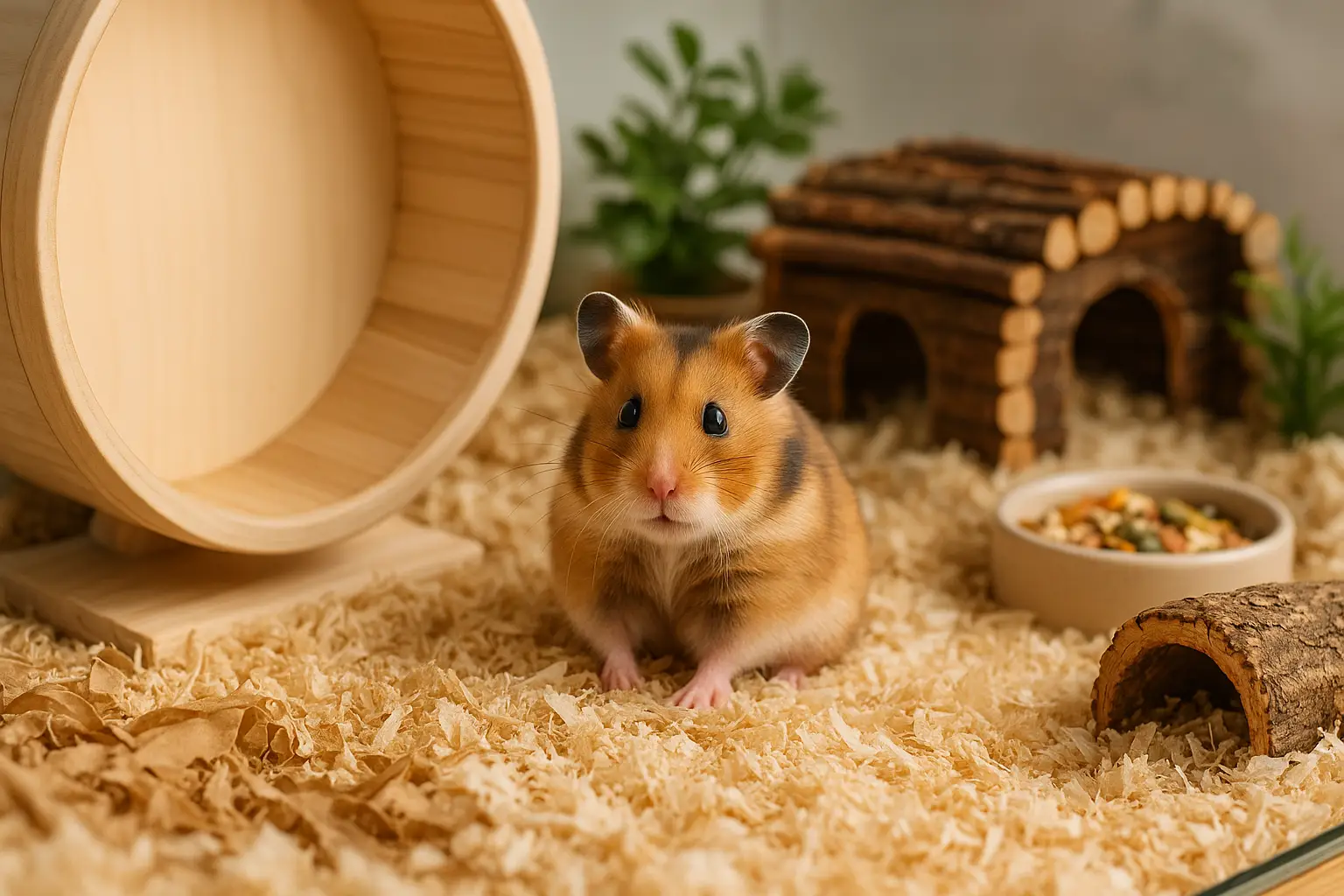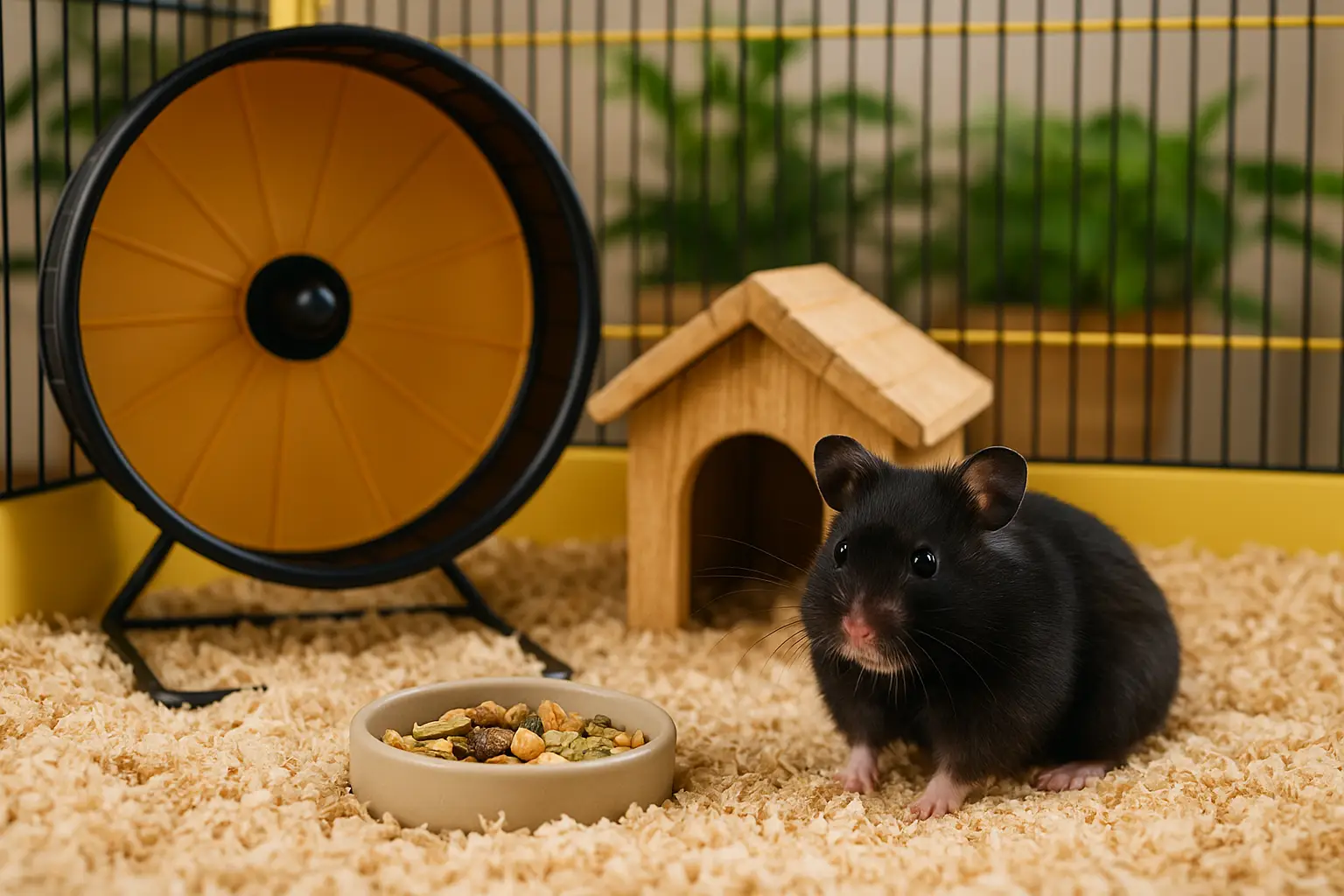How to Take Care of a Hamster: A Beginner’s Guide
Bringing home a hamster is an exciting moment — they’re adorable, fun to watch, and surprisingly full of personality! But just like any pet, they require proper care, attention, and a safe environment to thrive. Whether you’re getting your first hamster or want to improve how you care for your little buddy, this guide covers everything you need to know. 💛
Let’s dive into the wonderful world of hamster care!

1. Choosing the Right Type of Hamster 🧐🐾
Not all hamsters are the same. There are several species, and each has different needs and personalities.
Common types of pet hamsters:
- Syrian Hamster (also known as Golden or Teddy Bear hamster):
Solitary and easy to handle, best for beginners. - Dwarf Hamsters (Campbell’s, Winter White, Roborovski):
Smaller, faster, often more social with their own kind. - Chinese Hamster:
Long-tailed, gentle but rare in some countries.
📝 Important: Most hamsters prefer to live alone, especially Syrian hamsters. Keeping two together can lead to fights unless they’re a social dwarf pair introduced very young.
2. Setting Up the Perfect Cage 🏡🪴
Hamsters may be small, but they need a lot of space to run, explore, and stay healthy.
Must-have cage requirements:
- Size: Minimum of 80×50 cm (31×20 inches) floor space — bigger is better!
- Material: Glass tanks or wired cages with solid bottoms
- Flooring: Avoid wire floors — they hurt hamster feet
- Ventilation: Proper airflow is essential
📌 Add accessories like:
- A solid-surface exercise wheel (at least 20 cm for dwarf, 28 cm+ for Syrian)
- Hideouts and tunnels for security
- Climbing structures
- Chew toys for dental health
Avoid cages marketed as “starter kits” — they’re usually too small and not hamster-safe.
3. Choosing the Right Bedding 🌾🛏️
Hamsters love to dig and burrow, so you need deep, soft bedding that’s safe and absorbent.
Best options:
- Paper-based bedding (unscented)
- Aspen shavings (safe wood option)
🚫 Avoid:
- Pine or cedar shavings (toxic oils)
- Scented bedding (can irritate their lungs)
- Cotton fluff (can cause blockages)
Add at least 15–20 cm (6–8 inches) of bedding to allow natural burrowing behavior.
4. What Do Hamsters Eat? 🥦🥜
A balanced diet is key to keeping your hamster happy and healthy. 🐹🍽️
Core diet:
- Pelleted hamster food: Offers complete nutrition
- Seeds & grains: Use in moderation as treats
- Fresh veggies: Broccoli, cucumber, carrots, spinach
- Occasional fruit: Apple, banana (tiny pieces only)
💧 Always provide fresh water in a sipper bottle or small dish. Refill and clean it daily!
🚫 Never feed: onions, garlic, citrus, chocolate, sweets, or processed food.
5. Handling Your Hamster Safely 🤲💕
Hamsters are prey animals — so they scare easily. But with patience, you can earn their trust.
Tips for handling:
- Let them settle for 2–3 days before trying to touch
- Start by offering treats from your hand
- Scoop them gently with both hands, close to the ground
- Avoid waking them suddenly or grabbing from above (like a predator!)
Short, positive interactions build confidence over time. Don’t rush it!
6. Cleaning and Hygiene 🧼🪣
Cleanliness is essential for your hamster’s health — and for keeping your home odor-free.
Cleaning routine:
- Daily: Remove uneaten food and spot clean soiled bedding
- Weekly: Change part of the bedding, wipe down accessories
- Monthly: Deep clean the entire cage (use pet-safe soap, rinse well)
Leave some used bedding behind during cleanings to help your hamster feel secure.
7. Understanding Hamster Behavior 🕵️♂️🌙
Hamsters are nocturnal, meaning they’re most active at night. That’s completely normal!
Normal behaviors:
- Running on the wheel for hours 🏃♂️
- Burrowing and hiding
- Chewing constantly
- Collecting and hiding food in corners
Don’t worry if your hamster sleeps all day — that’s just their rhythm. 🌙
8. Health & Warning Signs 🚑🐹
Hamsters are tough, but they can get sick — and they hide symptoms well.
Watch out for:
- Lethargy or sudden behavior changes
- Wet tail or diarrhea (seek a vet fast)
- Hair loss or skin sores
- Constant sneezing or wheezing
- Not eating or drinking
If you notice any of these signs, contact a small animal vet as soon as possible.
9. Bonding With Your Hamster 💞🐾
Even though they’re tiny, hamsters can bond with you and recognize your scent and voice over time.
Ways to bond:
- Hand-feed them their favorite treats
- Speak to them gently and often
- Offer enrichment like toys and tunnels
- Let them explore a safe playpen area with supervision
A well-loved hamster can live a joyful, curious, and playful life. 🥰
Your Little Friend Deserves the Best 💖🐹
Taking care of a hamster is a fun and meaningful experience, but it comes with real responsibilities. From cage setup to diet, hygiene, and bonding — every detail makes a difference in your hamster’s happiness and lifespan.
When you give them the love, space, and care they deserve, they’ll reward you with their cute antics, funny habits, and big personality packed into a tiny body. 🌟🐾
Start with patience, learn as you go, and enjoy every little squeak and snuggle along the way. 💛



Post Comment